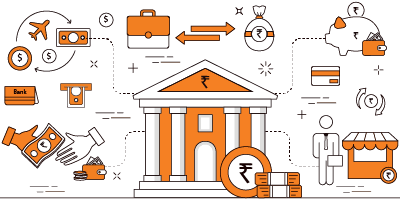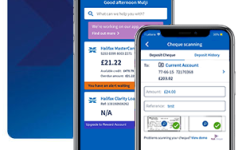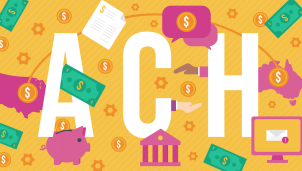Bank accounts are an essential part of our financial lives, providing a safe and convenient way to manage our money. With so many different types of bank accounts available, it can be complicated to understand which one is good for everyday transactions. In this quick review, we will explore the various options and help you make an informed decision on the best bank accounts to open.
Which Type of Bank Account is Best for Everyday Transactions: Checking vs Savings Compared
When it comes to everyday transactions, two primary types of bank accounts come into play – checking accounts and savings accounts. While both serve specific purposes in managing your finances, they have distinct features that differentiate them from each other.
Checking Accounts
A checking bank account is designed explicitly for daily financial activities such as making purchases or paying bills electronically or by writing checks. They usually offer unlimited access to funds through several channels like ATMs, branch visits, online banking platforms, or mobile apps (by the way, take a look at some apps to get paid early).
Key Features:
- Immediate access: With a debit card linked to your checking account; you can withdraw cash immediately whenever needed.
- Online banking services: Most banks provide robust online banking services where you can monitor your balance regularly and set up automatic bill payments.
- Overdraft protection options: For those who occasionally spend more than their actual balance allows, overdraft protection helps avoid declined charges by covering these expenses (usually at a fee).
Savings Accounts
On the other hand, savings accounts primarily focus on accumulating money over time while earning interest on deposited funds rather than facilitating frequent withdrawals or payments directly associated with transactional needs.
Key Features:
- Interest earnings: Unlike checking accounts that often earn little to no interest earnings, savings bank account balances accumulate interest monthly based on prevailing rates.
- Limited withdrawals per month: Federal regulations limit saving account holders’ total number of withdrawals/transfers per month before facing additional fees.
Top 5 Types of Bank Accounts: Which Type of Bank Account is Best for Everyday Transactions?
With different options for saving/sending money available, it’s essential to understand the types of bank accounts and choose one that suits your specific needs. Once again, take a look at the five common types of bank accounts and determine which one is best for everyday transactions.
Checking Account
As we have mentioned, a checking bank account is designed for daily financial activities such as receiving income, paying bills, making purchases with checks or debit cards, and accessing funds through ATMs. It offers unlimited withdrawals and deposits without any restrictions on transaction amounts. Checking accounts provides convenience and flexibility in managing day-to-day expenses like groceries or utility bills.
Savings Account
While savings accounts are not primarily intended for frequent transactions due to certain withdrawal limitations imposed by banks (usually around six per month), they serve an important purpose in building emergency funds or long-term saving goals. These accounts earn interest on deposited money over time but usually offer lower interest rates compared to other investment options like certificates of deposit (CDs) or individual retirement accounts (IRAs).
Certificate of Deposit (CD)
Certificates of Deposit are time-bound investments where you deposit a fixed amount into an account held by the bank itself. The CD has a maturity date when you can withdraw both the principal amount plus earned interest accrued over that period – typically ranging from three months up to several years depending upon terms agreed upon during opening the CD account.
Money Market Account (MMA)
Money market accounts combine features similar to both checking and savings accounts while offering higher yields than regular savings balances based mostly on short-term government debt securities’ prevailing rates rather than fluctuating stock market performances as mutual fund investments sometimes do; these have limited check-writing capabilities along with free ATM access provided some minimum balance requirements maintained at all times – they’re suitable if seeking better returns within reasonable liquidity levels.
Individual Retirement Accounts (IRAs)
Individual retirement accounts are long-term investment vehicles designed to help individuals save for retirement. IRAs offer tax advantages, including potential deductions on contributions and tax-deferred growth until withdrawal during the retirement years. While not typically used for everyday transactions, they provide a valuable option to grow savings over time with specific rules governing early withdrawals before reaching age 59½.
For everyday transactions like paying bills or making purchases, checking accounts remain the best choice due to their accessibility and unlimited transaction capabilities. Savings accounts can complement checking accounts by providing an avenue for setting aside funds while earning some interest simultaneously.
However, it’s important to note that other types of bank accounts mentioned above serve different purposes, such as saving for emergencies (CDs), higher yield balances with limited access (MMAs), or planning ahead for retirement (IRAs).
Do Checking and Savings Accounts Pay Interest?
Some banks may provide minimal interest rates on their checking accounts but often require high minimum balances or impose monthly fees that offset any potential earnings. The goal of a checking account is to control daily expenses.
The amount you earn in interest on your savings account balance is known as the Annual Percentage Yield (APY). This percentage represents how much the financial institution pays you based on your average daily balance throughout the year. Typically expressed annually but credited monthly or quarterly into your account balance.
Are My Money in My Checking and Savings Accounts Safe?
One of the most common concerns when it comes to personal finances is the safety of our hard-earned money. We work diligently to save and grow our wealth, so it’s only natural that we want assurance that our balances in checking and savings accounts are safe.
The good news is that if your accounts are held at a bank insured by the Federal Deposit Insurance Corporation (FDIC) or a credit union insured by the National Credit Union Administration (NCUA), your balances are indeed safe. These federal agencies provide insurance coverage for deposits up to $250,000 per account holder per institution.
The FDIC was established during the Great Depression as part of President Franklin D. Roosevelt’s New Deal reforms aimed at stabilizing the banking system. It provides deposit insurance protection for banks operating within its jurisdiction. On the other hand, NCUA is an independent agency created by Congress to regulate federally insured credit unions.
Both these entities have set up membership-based systems where financial institutions pay into funds collectively, financing insurance programs protecting customer deposits. This means even if your bank or credit union were to face financial difficulties or go bankrupt, you would be protected up to this limit.
It’s important to note that not all banks or credit unions may be covered under these schemes – they must meet certain criteria and obtain certification from either FDIC or NCUA before they can offer their customers this level of protection. Therefore, always ensure you choose reputable institutions with proper certifications when opening new checking or savings accounts.
While having insurance coverage for your deposited funds does provide peace of mind regarding their safety, it’s also essential not just to rely on such protections alone. Being proactive about managing one’s own personal finances remains crucial regardless of any guarantee provided.
Here are some additional measures individuals can take:
- Apply risk diversification: Consider spreading out funds among multiple institutions rather than keeping everything in one bank. This helps mitigate the risk of losing all your money if one institution fails.
- Regularly review account statements: Keep a close eye on activity in your accounts and verify any transactions you don’t recognize. If there are discrepancies, report them to your financial institution promptly.
- Stay informed about the financial health of your bank or credit union: Financial institutions publish regular reports that provide insights into their stability and performance. Monitoring these reports can help identify potential red flags early on.
It’s also important to remember that while FDIC and NCUA insurance protects deposits, they do not protect against losses due to investments made through banks or credit unions. If you have invested in stocks, bonds, mutual funds, or other investment products offered by these institutions, the safety of those investments will depend on market conditions and the underlying nature of those specific assets.
In conclusion, if you hold checking and savings accounts at an FDIC-insured bank or an NCUA-insured credit union, you can rest assured knowing that up to $250,000 per account holder is protected should anything happen to the institution. Hopefully, now you know much more about different types of bank accounts. Stay safe and enjoy the convenience!










